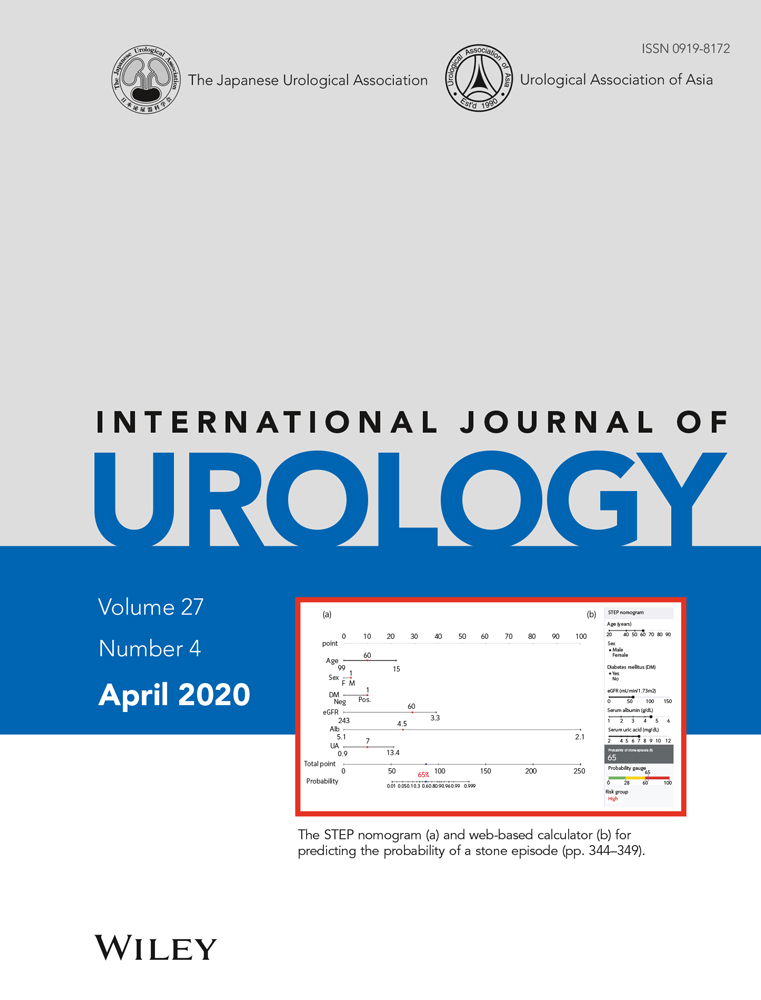STone Episode Prediction: Development and validation of the prediction nomogram for urolithiasis
Abstract
Objectives
To develop and validate a nomogram predicting the occurrence of a stone episode, given the lack of such predicting risk tools for urolithiasis.
Methods
We retrospectively analyzed 1305 patients with urolithiasis and 2800 community-dwelling individuals who underwent a comprehensive health survey. The STone Episode Prediction nomogram was created based on data from the medical records of 600 patients with urolithiasis and 1300 controls, and was validated using a different population of 705 patients with urolithiasis and 1500 controls. Logistic regression analysis was used to construct a model to predict the potential candidate for a stone episode. The predictive ability of the model was evaluated using the results of the area under the receiver operating characteristics curve (area under the curve).
Results
Age, sex, diabetes mellitus, renal function, serum albumin, and serum uric acid were found to be significantly associated with urolithiasis in the training set and were included in the STone Episode Prediction nomogram. The optimal cut-off value for the probability of a stone episode using the nomogram was >28% with a sensitivity of 79%, a specificity of 76%, and area under the curve of 0.860. In the validation test, area under the curve for the detection of urolithiasis was 0.815 with a sensitivity of 81% and specificity of 63%.
Conclusions
Herein, we developed and validated the STone Episode Prediction nomogram that can predict a potential candidate for an episode of urolithiasis. This nomogram might be beneficial for the first step in stone screening in individuals with lifestyle-related diseases.
Conflict of interest
None declared.




